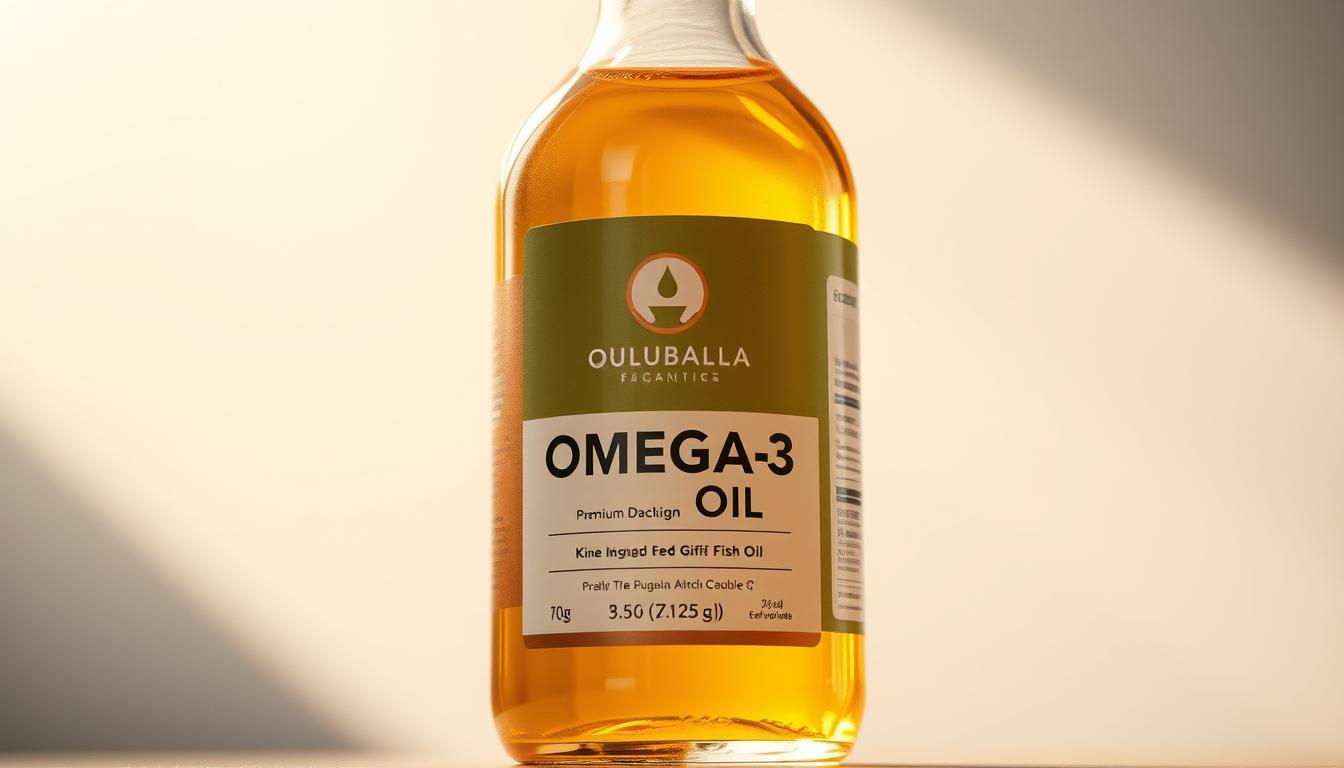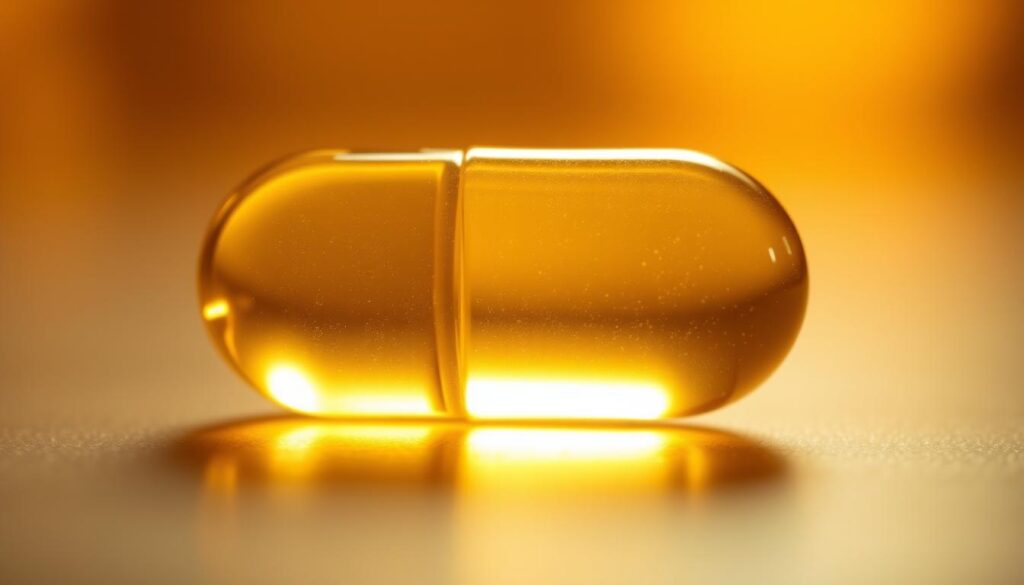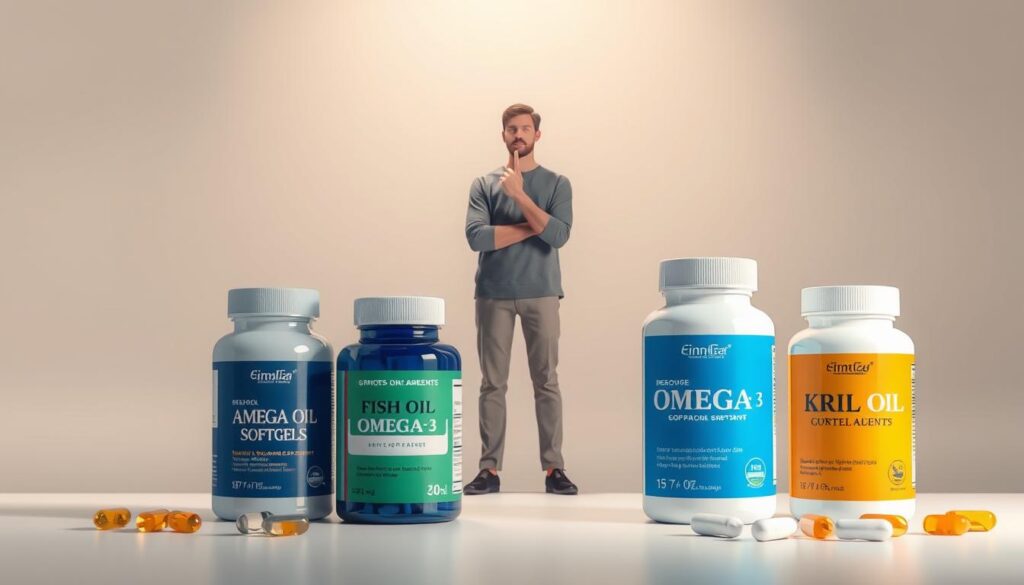Physical Address
304 North Cardinal St.
Dorchester Center, MA 02124
Physical Address
304 North Cardinal St.
Dorchester Center, MA 02124

Surprising fact: nearly 80% of Americans eat little to no fatty fish, yet these oils play a major role in brain and heart performance.
I write this guide as a practical, first-person walkthrough to help you decide when a supplement makes sense if fish isn’t often on your plate. I focus on real effects you can notice, safe EPA+DHA limits, and how to shop smart.
Quality and transparency matter more than glossy labels. I explain how I weighed purity, oxidation control, third‑party testing, and sustainability to build a trusted short list that includes Nordic Naturals, Nature Made (USP-verified), Carlson (IFOS), Thorne with CoQ10, FullWell for pregnancy, and top algae-based picks.
I also flag freshness cues—smell checks, expiration, and antioxidants—so you avoid rancid oil and fishy burps while staying within FDA guidance of ≤3,000 mg/day EPA+DHA (≤2,000 mg/day from supplements).
I narrowed the field by focusing on real-world purity, absorption, and honest labeling.
Independent research shows many products don’t match their labels, so I favor items with third‑party testing from USP, NSF, or IFOS. This verifies potency and reduces surprises.
I also weight sustainability badges like Friend of the Sea and MSC. Responsible sourcing matters for the long-term health of the ocean and your plate.
“I prefer clear COAs and small‑fish sources to cut contaminants and keep oil fresh.”
Finally, I balance EPA/DHA per serving with capsule size and flavor so the product fits daily life. That choice keeps quality practical in a crowded market.
I’ve seen clear, day-to-day changes when people raise their EPA and DHA through diet or targeted oil choices. Small, steady intake often shifts markers and how you feel.
EPA and DHA help lower triglycerides, can ease inflammation, and may nudge blood pressure and cholesterol toward healthier ranges. Results show up over weeks to months, not overnight.
DHA is central to brain structure. Many people notice clearer focus and steadier mood with regular intake. Clinical studies and ongoing research support cognitive support, though individual responses vary.
During pregnancy, experts often recommend at least 300 mg DHA daily for fetal brain, eye, and nervous system development. If you don’t eat fatty fish twice weekly, a fish oil or algal oil option can help bridge gaps.
“Consistent daily intake matters more than quick fixes; quality, form, and dose determine results.”
I’ll explain how different chemical forms affect absorption, stability, and real-world results.
Natural fish oil is mainly triglycerides (TG). A typical 1,000 mg fish oil capsule contains roughly 180 mg EPA and 120 mg DHA and may include vitamins A and D. TG is well absorbed by many people.
Processed concentrates often appear as ethyl esters (EE). EEs can oxidize more easily. Re-esterified TG (rTG) restores absorption closer to natural TG.
Krill oil carries omega-3s in both TG and phospholipids. That phospholipid form may boost uptake. Krill also supplies astaxanthin, which helps resist oxidation.
Algal oil delivers direct EPA and DHA without fish. It’s contaminant-free and vegan-friendly.
Green-lipped mussel oil adds ETA and can aid joint support. ALA-rich seed oils convert poorly to EPA and DHA, so they play a limited role unless paired with other sources.
| Form | Typical advantage | When I choose it |
|---|---|---|
| TG | Natural absorption, vitamin presence | Daily use for steady intake |
| rTG | Restored absorption from concentrates | When potency matters with better uptake |
| Krill (PL) | Phospholipid uptake, astaxanthin | People wanting absorption and oxidation resistance |
| Algal | Vegan, contaminant-free DHA/EPA | Vegetarians, pregnancy planning without fish |
“Check labels for TG, rTG, EE, or PLs to spot the form and expected absorption.”
I outline how much EPA and DHA to aim for, and how to take them so your body absorbs them. I focus on practical targets you can fit into daily life and on safety limits set by regulators.
Practical targets: I aim for steady EPA+DHA totals rather than big one-off doses. For most people, splitting intake across the day—morning and evening—helps steady absorption and reduces stomach upset.
Timing tip: taking fish oil with a meal that contains fat boosts uptake and cuts GI side effects. If you prefer liquid formats, a spoon with food works well; capsules are fine with a full meal.
The FDA recommends a total of ≤3,000 mg/day of EPA+DHA, with ≤2,000 mg/day coming from supplements. Track amounts on labels so you don’t stack past those limits when using multiple products.
Oils oxidize. Check expiration dates, sniff for off smells, and store liquids refrigerated to slow rancidity. Antioxidants like mixed tocopherols help stabilize higher-potency concentrates.
Note: enteric coatings can cut burps but may mask a turned oil, so open a capsule occasionally and check freshness.
“If you take blood thinners, plan surgery, or manage lipid therapy, consult your clinician before increasing intake.”
When I shop, I scan labels for the actual EPA and DHA numbers, not the headline “fish oil” milligrams. That front-of-bottle claim often hides the true content per serving.
Look at the back label. A 1,000 mg fish oil capsule may only deliver ~320 mg combined EPA+DHA. I record the dha per serving and EPA value to judge real potency and price per effective milligram.
I trust seals from USP, NSF, or IFOS. Even better: a lot-specific COA you can verify online. That confirms label content, contaminants, and oxidation markers.
I prefer oils processed by molecular distillation or similar contaminant removal. Antioxidants and clear expiration dates protect freshness. I favor short‑lifespan fish and MSC or Friend of the Sea sourcing.
I also value capsule innovations—enteric coatings, smaller sizes, mild flavors—that improve tolerance and adherence.
| Feature | What I check | Why it matters |
|---|---|---|
| EPA/DHA per serving | Exact mg on back label | Shows true potency |
| Form | FFA, TG, rTG, PLs vs EE | Predicts absorption |
| Testing | USP/NSF/IFOS and COA | Verifies content and safety |
| Freshness & tech | Antioxidants, dates, capsule type | Prevents rancidity and burps |
“Read the back label, check seals, and favor clear COAs over marketing copy.”
I chose products that combine clear testing, practical potency, and tolerable formats you’ll use every day.

I crown nordic naturals Ultimate Omega for high potency (~1,280 mg total per 2 softgels: ~650 mg EPA, 450 mg DHA), Friend of the Sea sourcing, and public lot COAs that prove purity and quality.
Nature Made delivers ~660 mg combined EPA+DHA per softgel with USP verification. It’s a solid choice for reliable content at a low price.
Carlson’s liquid gives ~800 mg EPA and ~500 mg DHA per teaspoon, IFOS-certified and flavored for easier daily use. Refrigerate after opening.
Thorne pairs ~630 mg EPA+DHA with 30 mg CoQ10 in NSF facilities for heart-focused routines. FullWell Women’s Fish Oil targets pregnancy needs with balanced DHA, small softgels, and third‑party testing.
My recommendation: match form, flavor, and dosing cadence to your routine so the product becomes your daily choice.
For those who skip fish, algae-derived oils offer direct DHA and, increasingly, balanced EPA too. I list four vegan options I trust for athletes, daily use, and brain-focused routines.
Why I like it: NSF Certified for Sport, 1,000 mg total per 2 capsules (500 mg EPA, 500 mg DHA). Vegan, gluten-free, GMO-free — ideal for athletes who need verified purity.
Why I like it: 715 mg total (195 mg EPA, 390 mg DHA) per 2 softgels. Certified vegan with third‑party testing that proves quality and label accuracy. Nordic Naturals is a solid product choice for everyday use.
Why I like it: Concentrated DHA focus — 500 mg DHA per 2 softgels. Great if your main goal is brain support, though it lacks EPA.
Why I like it: High total omega—1,250 mg per 2 softgels (280 mg EPA, 700 mg DHA). Certified vegan, third‑party tested, made in cGMP facilities for consistent quality.
| Product | EPA / DHA (per 2) | Certification | Best for |
|---|---|---|---|
| Momentous Vegan | 500 / 500 mg | NSF Certified for Sport | Athletes, tested purity |
| Nordic Naturals Algae | 195 / 390 mg | Third‑party tested | Everyday vegan option |
| Garden of Life Minami | 0 / 500 mg | Certified vegan | Brain / pregnancy planning |
| Sports Research Vegan | 280 / 700 mg | Third‑party, cGMP | High‑potency DHA focus |
“Algal oil gives direct EPA and DHA without relying on ALA conversion—cleaner source with low contaminant risk.”
I suggest you match EPA/DHA ratios to your goals. Check capsule size, taste, ingredients, and subscription pricing if you plan long-term use. If you avoid fish oil, these plant-based choices give reliable potency and testing you can trust.
I build a quick-reference snapshot to help you match product metrics to your goals. Below I show EPA/DHA per serving, the common form, top certifications, and a practical “best for” tag so you can scan fast.

Look at the EPA and DHA columns first to judge potency. Then check form and certification for absorption and safety. I also include storage notes so you keep oil fresh after purchase.
| Product | EPA / DHA (per serving) | Form | Certifications | Best for |
|---|---|---|---|---|
| Nordic Naturals Ultimate Omega | 650 / 450 mg | rTG | Friend of the Sea, COAs online | Daily heart & brain support |
| Nature Made 1200 mg | ~660 mg combined | TG | USP-verified | Value-focused daily use |
| Carlson Liquid | 800 / 500 mg (per tsp) | TG (liquid) | IFOS | High-potency liquid option |
| Thorne with CoQ10 | ~630 mg combined + 30 mg CoQ10 | rTG | Third‑party facilities | Heart combo routines |
| FullWell Women’s Fish Oil | DHA-forward (pregnancy-minded) | TG | Friend of the Sea, third‑party | Pregnancy & breastfeeding |
| Momentous Vegan | 500 / 500 mg | Algal oil | NSF Certified for Sport | Athletes & tested purity |
Price per effective mg helps with budgeting. I compare cost per combined EPA+DHA monthly to see value.
Form and flavor affect tolerance. Capsules, enteric coatings, or flavored liquids change how likely you are to stick with a product.
“Match your goals—triglyceride control, pregnancy, sport testing, or vegan needs—then use the chart to narrow choices quickly.”
I want to start with simple habits that stop fishy aftertastes and make oils work better for your body. These tweaks are practical and easy to keep up.
Enteric coatings help by dissolving in the small intestine, which cuts burps. I still recommend an occasional smell check of a capsule to make sure the oil hasn’t gone rancid. Coatings can mask a bad scent until you open one.
Flavored liquids or lemon softgels reduce aftertaste. Liquid fish oil often absorbs fast, and I mix a teaspoon into yogurt or a smoothie to hide flavor and ease swallowing.
“Start low and increase slowly; consistency beats big, sporadic doses for comfort and results.”
If burps persist, I suggest switching to algal oil or krill oil as an alternative form—some people tolerate those better while still getting the same core ingredients. Small changes make daily use realistic and comfortable.
I pick a form based on your eating pattern, life stage, and goals. The right choice cuts waste, improves tolerance, and helps you reach targets faster.

If fish is rare in your diet, a well‑tested fish oil in TG or rTG form is a practical play. These forms absorb well and give clear EPA/DHA per serving.
For convenience, choose higher‑concentration oils so you need fewer capsules each day.
Algal oil supplies direct EPA and DHA without relying on ALA conversion. I recommend third‑party tested vegan options when fish is not on your plate.
DHA matters most here. I look for DHA‑forward formulas that provide at least ~300 mg DHA daily. Small softgels and verified purity give extra peace of mind.
Higher‑EPA concentrates help reach therapeutic totals with fewer caps. Krill oil can appeal if oxidation is a worry because its phospholipids and astaxanthin add stability.
| Situation | Form I recommend | Why |
|---|---|---|
| Low fish intake | TG / rTG fish oil | Good absorption, clear EPA/DHA per serving |
| Vegan / vegetarian | Algal oil | Direct EPA/DHA without fish |
| Pregnancy / breastfeeding | DHA‑forward fish or algal | Targeted fetal and infant support; third‑party testing |
| Triglyceride / heart focus | High‑EPA concentrate / krill oil | Efficient dosing; krill adds oxidation resistance |
“Match form to your diet, health goals, and tolerance—then confirm purity with third‑party testing.”
I want you to leave this guide with a simple, actionable plan. Pick a tested omega-3 supplement that you will take daily. Take it with a fat-containing meal to boost absorption. This small habit helps your body show real results.
Match form to your goals—TG/rTG fish oil, krill phospholipids, or algal oil for vegan needs. Choose a fresh, sustainably sourced product from the market and avoid bulk buying since these oils are perishable.
Stay under FDA intake limits and check labels so you know what fish oil contains. I often start people on Nordic Naturals or a verified algal option and track how their diet and energy shift.
Store bottles cool, watch dates, and do smell checks. Share your experience or questions so I can help fine‑tune your choice and routine.